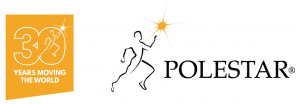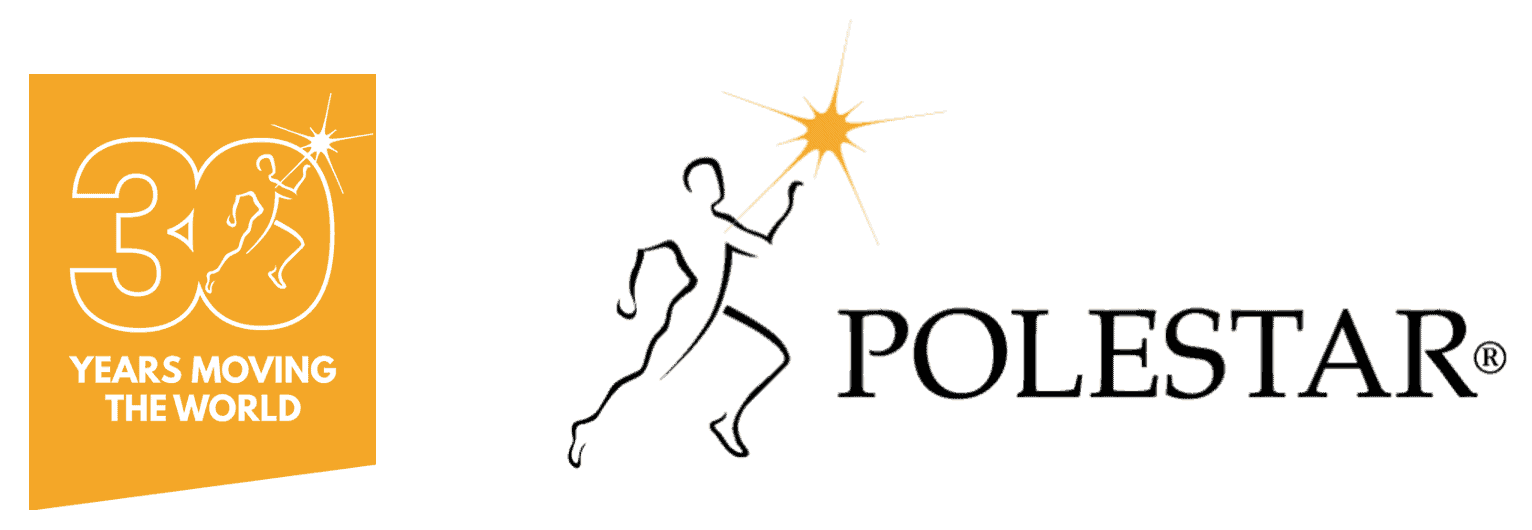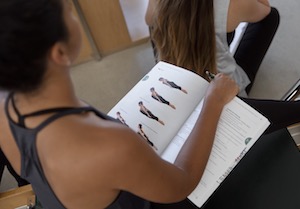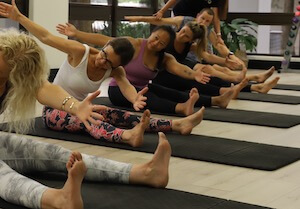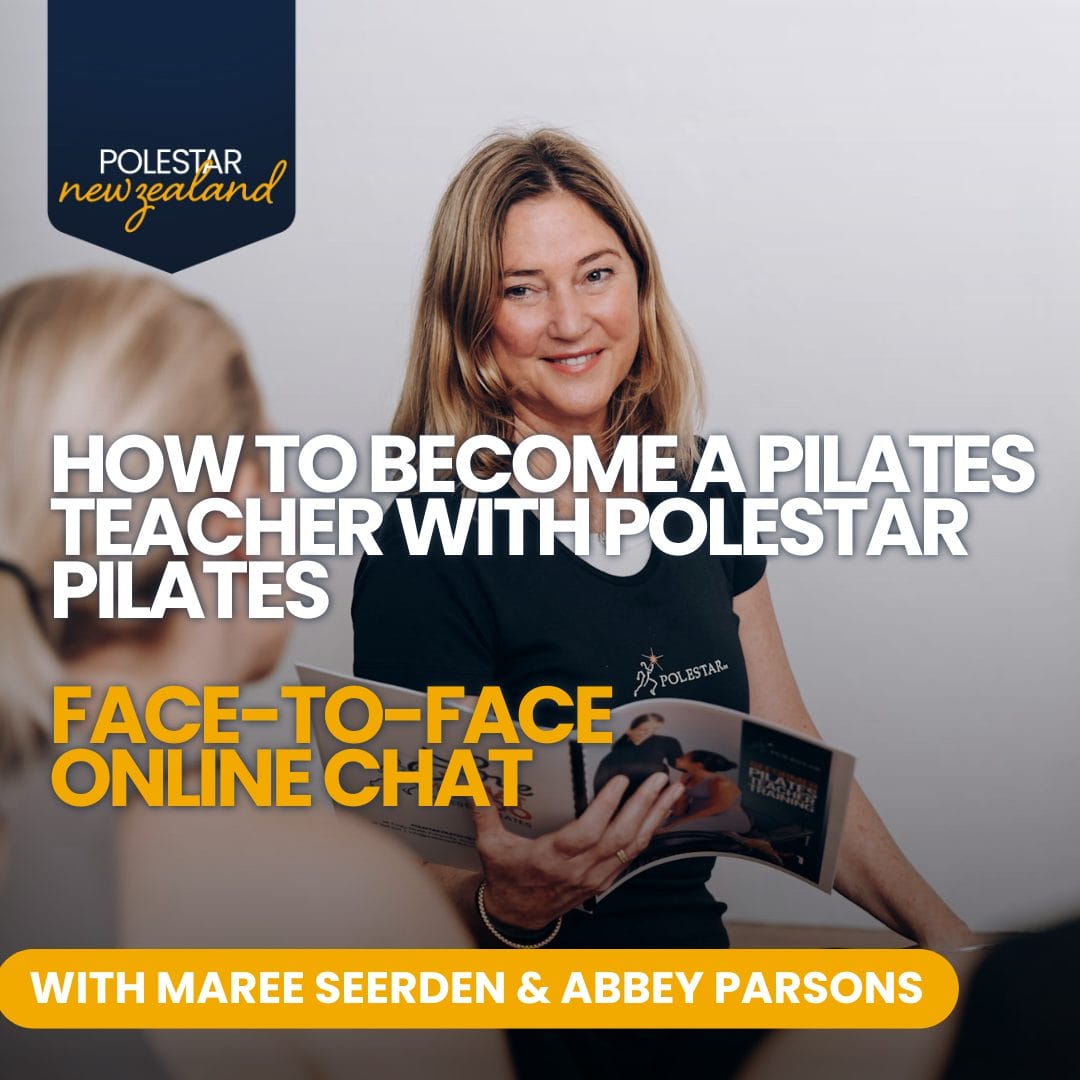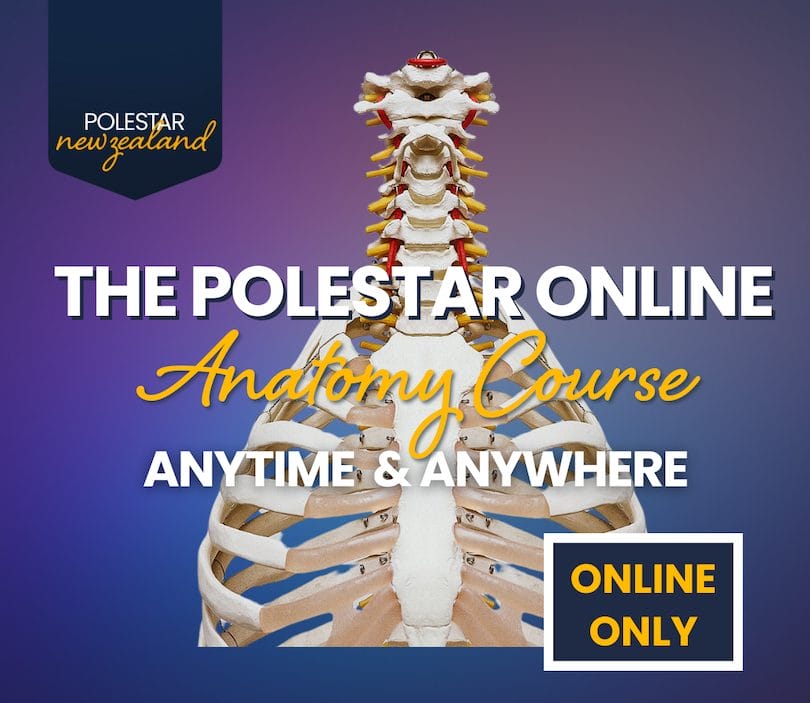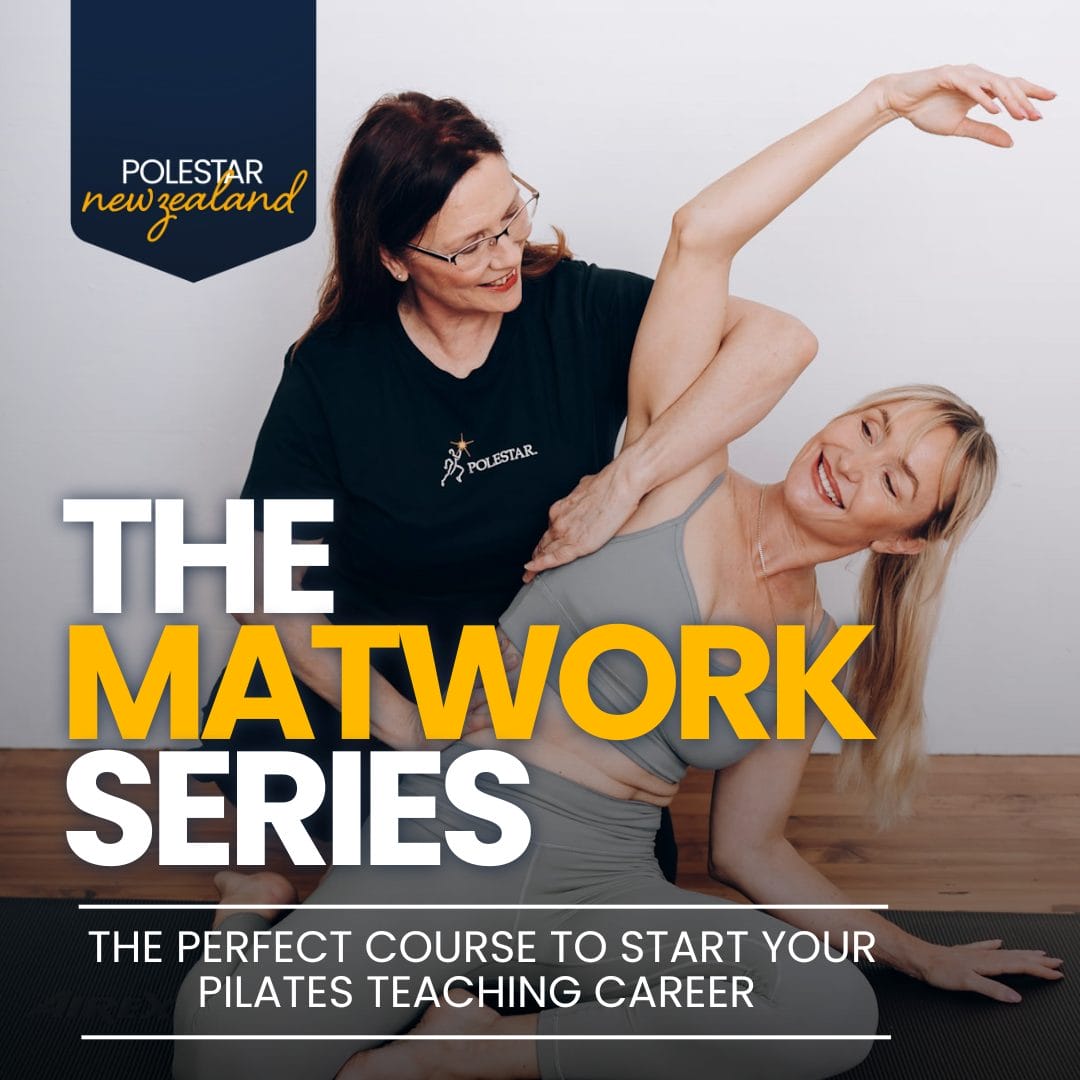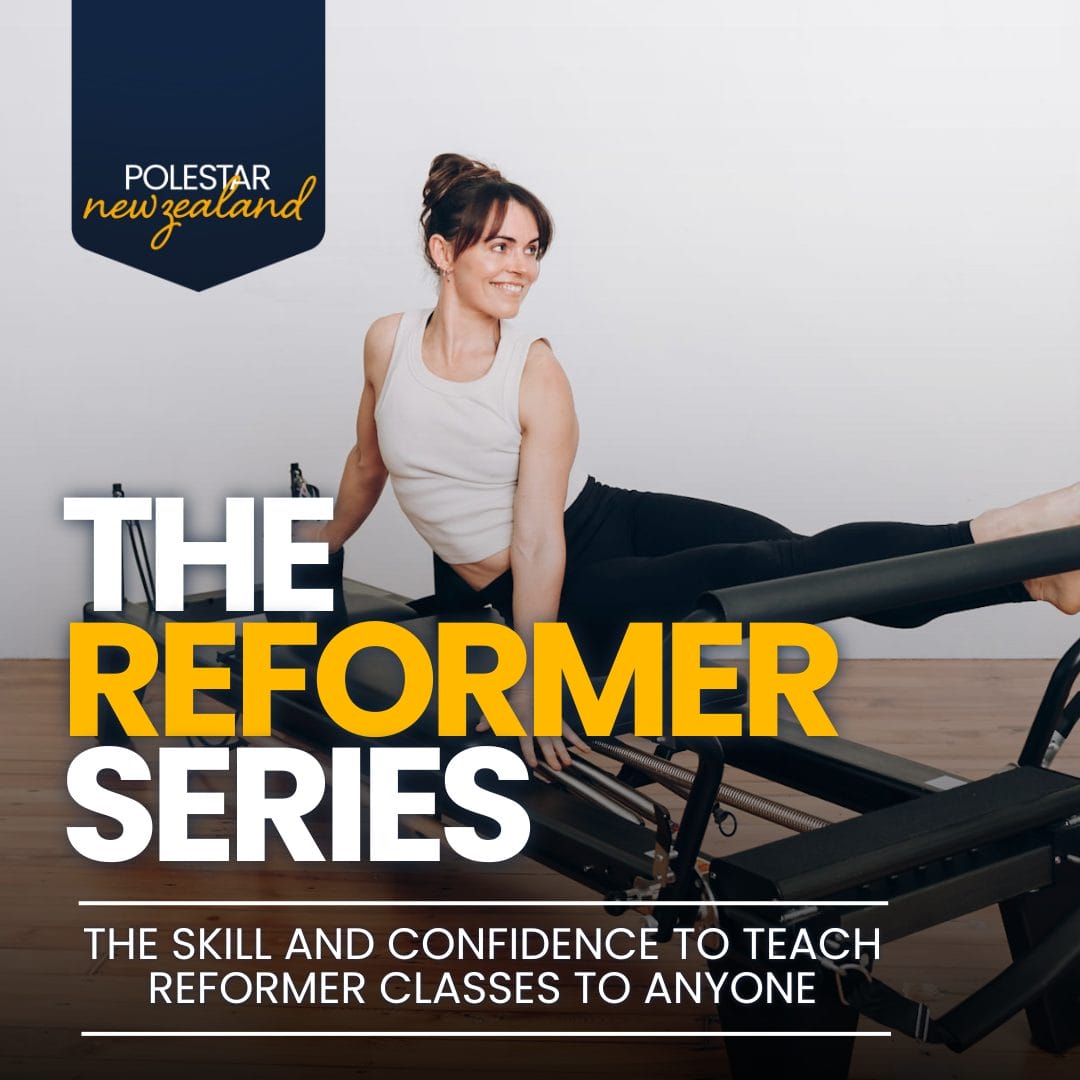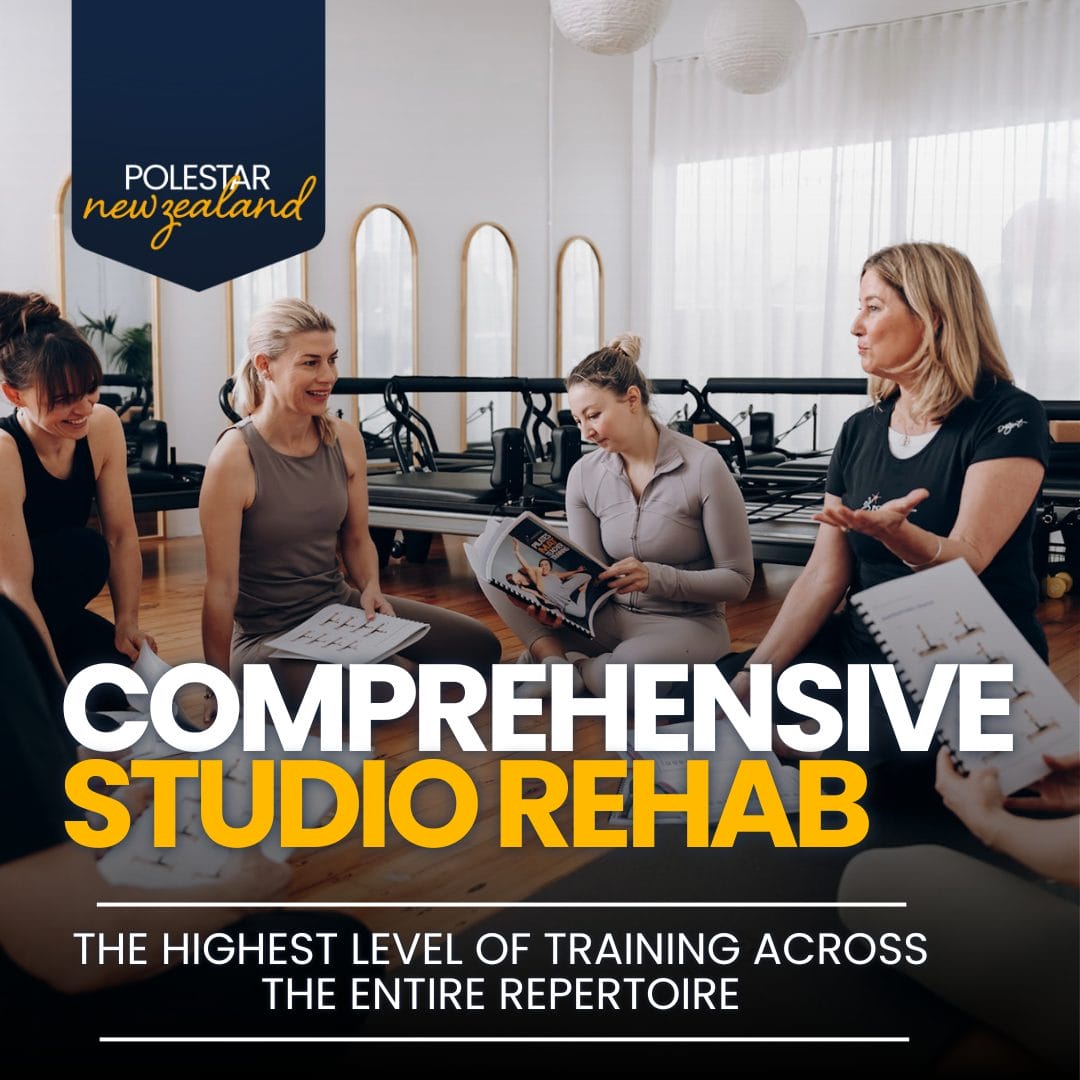Polestar Pilates
Teacher Training & Education
How students rate Polestar Pilates Teacher Training - click here for the details
HOW TO EXPAND – OR START – YOUR CAREER AS A WORLD-CLASS PILATES TEACHER
Find out how to start or expand a rewarding career as a skilled and respected Pilates teacher – or if you are a physiotherapist, learn how Polestar provides rigorous, evidence-based methods and skills necessary for clinical integration to enhance client recovery.
Our focus is on whole body wellness, healing through movement, and the mind-body connection. We are best-known for our holistic and science-based approach to functional movement that leads to complete mastery of body and mind.
We accommodate your busy schedule by offering a combination of in-person and online learning experiences. You can participate in live training sessions, access online resources, and engage in interactive discussions. CLICK HERE or on the picture to view the recording.
Accredited Courses to Become a Pilates Teacher
Start your career as a top-level Pilates instructor
Don’t settle for simply learning and memorising exercises. What makes our Pilates teacher training unique is that we ensure you find your own voice as a Pilates and movement professional.
You will develop skills that truly impact your career, such as the ability to analyse, reason, plan, and apply exercises and variations appropriately. Our International Certification is much more than a diploma – it is proof that you have acquired the key competencies needed to stand among the best Pilates instructors.
Accredited Courses for Physiotherapists
Train in Pilates with courses designed specifically for Physiotherapists
Pilates has become an essential tool for physiotherapists because of its significant impact on patients’ quality of life. Polestar training provides a progressive and adaptable framework for reintroducing and restoring movement in people suffering from chronic pain, injury, or musculoskeletal conditions.
In addition, moderate-intensity, highly cognitive exercise has been shown to deliver powerful psychological and emotional benefits – reducing anxiety and promoting overall wellbeing alongside physical recovery.
A Key Tool for Patient Rehabilitation and Recovery
As a physiotherapist, you already know that movement is medicine. Pilates gives you a proven method to:
- Support rehabilitation after injury or surgery
- Restore functionality and mobility
- Manage and reduce chronic pain
- Enhance long-term quality of life for your patients
For more than 30 years, Polestar has been a leader in combining Pilates and movement science, offering courses for physiotherapists that are tailored as tools for the prevention, management, and treatment of musculoskeletal conditions.
Listen to this webinar for New Zealand Physiotherapists with Dr Brent Anderson
Want to find out about innovative and evidence-based approaches to enhance your rehabilitation and movement therapy skills?
Check out this 1-hour webinar which we ran exclusively for New Zealand-based physiotherapists. Led by the internationally renowned Dr. Brent Anderson PhD, PT, OCS, founder of Polestar Pilates, this session promises to transform your approach to rehabilitation and movement therapy.
To busy to listen to this 1-hour webinar? Access a PDF form summary: click here to access and download
Why Choose Polestar?
Polestar goes beyond conventional Pilates training. We understand physiotherapy curricula worldwide and know exactly which areas of knowledge you need to complement in order to become a professional with valuable, in-demand competencies.
With over 30 years of experience training movement professionals in more than 50 countries, Polestar stands as one of the most respected schools globally. We’re also a vibrant community of practitioners who continuously explore the latest advances in movement science, integrating them into our programmes whilst preserving the essence of the method.
With Polestar, you gain:
- Internationally recognised certification respected across 50+ countries
- Evidence-based training integrating the latest movement science with the essence of Pilates
- Practical clinical application for rehabilitation and patient care
- Skills that set you apart in both healthcare and wellness sectors
- Access to a global community of Pilates professionals and mentors
Our training prepares you with competencies that will enhance your clinical practice and expand your career opportunities across healthcare, rehabilitation, and wellness settings.
Our international reach gives us a global perspective that fosters innovation, creativity, and effectiveness in the way we teach Pilates and movement.
Ready to build your expertise? Explore our comprehensive course offerings and join our global community of movement professionals.
IF YOU NEED TO OBTAIN A BASIC KNOWLEDGE OF ANATOMY AND PHYSIOLOGY, COMPLETE THE POLESTAR ANATOMY COURSE
Polestar Anatomy is one of our most requested courses by our graduates and students. This 8-hour course is specifically designed as an introduction to muscle skeleton anatomy for movers and movement teachers and will prepare you for any of the Polestar certification courses. The Polestar online Anatomy course is the perfect course to prepare you for any of the Polestar curriculum, or to refresh your knowledge of the body and how it moves.
CLICK HERE – OR ON THE PICTURE – FOR MORE INFO
REFORMER COURSE
ATTEND ONLINE OR IN-PERSON IN AUCKLAND OR CHRISTCHURCH
The Polestar Pilates Reformer Teacher training course is a comprehensive certification program designed to elevate your teaching skills and enable you to effectively utilise the Pilates Reformer apparatus.
This course covers a wide range of exercises and variations, emphasizing proper alignment, biomechanics, cueing techniques, and progressions.
By mastering the Reformer, you will expand your ability to provide personalized and impactful training sessions to your clients.
Look no further for superior Pilates Instructor Training!
CLICK HERE – OR ON THE PICTURE – FOR MORE INFO
Over 30 years the Gold Standard for Pilates Instructor Qualification in more than 50 countries – all around the world.
We are a global community of scholars, changing the world of movement by producing the best Pilates instructors and setting the gold standard in Pilates instruction and Pilates Teacher Training.
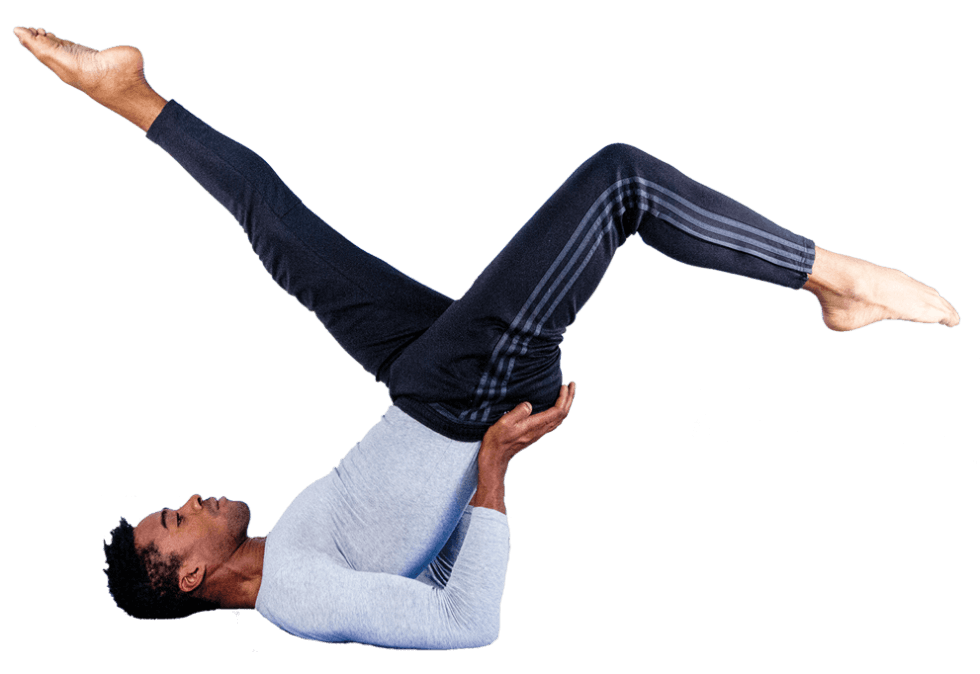
PILATES HOUR
Your weekly dose of Pilates knowledge!
Check out our free webinars that incorporate case studies, practical examples, assessment techniques specific to Pilates, physiotherapy – and MUCH more!
Education
Get Polestar Pilates qualified and become an internationally recognised Pilates professional
Hear what our Graduates have to say
Here’s what our students have to say about their experience training with Polestar Pilates.
Tell us about your experience as a Polestar student!
We’re committed to providing the very best in Pilates education and resources, but we can’t do it without you!
Your thoughts on our courses, the online platform, the Mentors etc. help us shape a better experience for everyone.
✨ By sharing your feedback, you’re not only helping us improve, but you’re also inspiring the next generation of Pilates professionals! ✨
We therefore would love to hear from you — please take a few minutes to share your experience below
The amazing Polestar Pilates 'Align the World Tour' weekend
Dear Polestar NZ Team – thank you so much for such a beautiful weekend.
It truly was the ‘retreat’ I have been dreaming of for a long time. Movement, permission to take the time to go within, connection with others, nourishing food, alignment of body, mind and spirit ❤️
When I asked Brent to sign my book I was filled with emotion but could not articulate my gratitude to him. Please give him a big hug from me. I have gained so much from being in his presence and collectively uplifted by being amongst the incredible community that is Polestar ❤️
SEE HERE FOR THE WEEKEND THAT IS REFERRED TO ABOVE: https://polestarpilates.co.nz/workshops/align-the-world-tour-nz/
Thank you to all the educators at Polestar for such an extraordinarily rewarding experience
Thank you to all the educators at Polestar for such an extraordinarily rewarding experience.
You are all the most gifted and passionate teachers…with every encounter, you deepened and enriched my understanding of the fundamentals as well as the nuances of the Polestar principles and exercises well beyond the curriculum.
Your enthusiasm and dedication is admirable and also highly infectious, the Polestar brand is clearly in very good hands in New Zealand!
Kind regards
One of the best parts of training with Polestar is the magic that happens after the course has finished
I love how there’s continual learning in this profession. Never a dull moment!
One of the best parts of training with Polestar is the magic that happens after the course has finished and as you continue to deepen your knowledge and hone your skills through observing and assisting the educators in their practice. I have been observing Maree and throughout this process I am learning so much more than what is covered in the course books. You just can’t beat working with people in real life.
Some of Maree’s clients have been coming to her for decades yet we uncovered an ‘ah ha’ moment as we explored breath patterns in a different way for an exercise a client has done many times before. Everybody is different, and can present differently each time they arrive at the studio depending on what they’ve been doing in their daily lives. Working with bodies in the here and now is so crucial to be a successful studio Pilates instructor.
I’ve also been able to observe how to manage clients with complicated injuries and watch how Maree assists the client to move functionally – sometimes with very subtle adjustments.
I’ve also found that concepts we discussed during the course that at times seemed ‘over my head’ now make complete and utter sense. The more you do, the more you learn and the more it all makes sense. I am loving this journey and hope to one day be as wise and talented as Maree and Emily (and the other Polestar educators).
Polestar Pilates changed my life!
My journey with Polestar began in 2022, at a time when my life had just undergone a significant change during COVID. Seeking stability amid the confusion and uncertainty, I decided to pursue something I could truly focus on and continually explore. That’s when I found Polestar Pilates.
I participated in the training courses of Mat, Reformer and Comprehensive, and got to meet the excellent and professional education team in Auckland. During the process of guidance by the unique mentoring of Polestar system, my body and mind changed greatly. In 2023 and 2024, I successfully passed the Reformer and Comprehensive exams.
I have owned my Pilates home studio, met many lovely clients and gained a lot of recognition and sense of accomplishment in the process of teaching them Pilates.
During the Pilates teacher‘s development, Polestar NZ also provides training opportunities on a variety of topics, including master classes and workshops brought to New Zealand by the founders of the entire system, Brent Anderson and Shelly Power themselves, which are amazing experiences.
I am grateful to Maree, Jo, Emily, Shanelle in Auckland, and Andrew as the system technical support, for their guidance and support throughout my process. This year, I joined the Mentor training program, hoping to become an excellent Polestar mentor like them, who can help more people in a more professional way.
除此之外,我用我的母语中文来表达:所有看到这条反馈的华人朋友,我们新西兰培训中心的所有教育者导师团队非常友好,语言不会成为学习障碍,我今年加入了这个团队 预备成为其中的华人导师,希望将来可以帮到大家,期待!
Mat Pilates
I recently finished studying Mat Pilates with Polestar. It was a great experience! The course was in depth, comprehensive, informative and incredibly worth while. Although I had done a lot of Mat Pilates before, there was SO MUCH MORE to learn! Emily and the other instructors are highly knowledgeable, passionate and approachable.
I currently have lots of people who come to my classes with injuries or limitations and I now feel well equipped to know how to best modify exercises for them, so they can still progress without doing anything detrimental.
I’m a huge fan of Mat Pilates. The exercises helped me gain strength, mobility, flexibility and balance after giving birth to 3 big babies.
Working with a mentor was highlight for me! Ann Michelle was brilliant in every way, she helped me understand the exercises in depth, answered my endless questions and gave me heaps of encouragement.
Would highly recommend this course.
Click here to give us your review about your experience as a Polestar student
Enquire Now
Please take a few minutes to fill out this survey, so we get you know you better – and to make sure we can recommend the best training courses available to you – we will then get in touch with you!
Also, let us know if you want to subscribe to our newsletter so that we can keep you informed about our courses and workshops.
